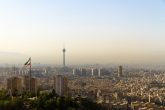November 15, 2021
Assessing the Biden Administration’s Policy Toward the Indo-Pacific
Well into the first year of Joe Biden’s presidency, assessments of his administration’s foreign policy have already begun to appear. Several commentators have attempted to identify a “Biden Doctrine” to little avail. However, none have yet examined Biden’s policy toward the world’s most critical region: the Indo-Pacific. The administration’s opening months have produced tangible wins and presented a generally coherent theory of success in regional affairs. But the next phases are likely to prove more difficult to tackle — and the potential for heightened aggression from China looms large.
The Biden Administration’s approach toward the Indo-Pacific region can be distilled into three key pillars. The first and most defined pillar is revitalising relationships with allies and close partners. Early outcomes in this area include holding summits with leaders from Japan and South Korea along with a brisk succession of trilateral engagements; elevating the Quadrilateral Security Dialogue (Quad); negotiating the Australia-United Kingdom-United States enhanced trilateral partnership (AUKUS), and refreshing defence ties with the Philippines. The Biden team has further sought to foster links between allies in Asia and Europe and build consensus about the challenge China poses. However, these efforts have encountered headwinds with Europe’s angst over the Afghanistan withdrawal and France’s fury over AUKUS.
Biden’s prioritization of allies and close partners could leave the rest of the region’s states unsure about their role and those of the region’s legacy multilateral institutions, such as ASEAN and the East Asia Summit.
The allies and partners pillar often gets short-changed as simply mending fences following the discord during the Trump Administration. That description underestimates the full ambition, though. The Biden Administration aspires to reforge relationships for the strategic conditions of a new period in regional and global geopolitics. Alliances and partnerships must now account for, among other strategic trends, a post-Afghanistan United States, a world-transforming due to the rapid emergence of new technologies, and an increasingly rapacious China under Xi Jinping. Security pacts must also reflect an era where allied states are stronger than in earlier years and are therefore seeking concomitant autonomy, but where the need for truly cooperative security arrangements to uphold the rules-based international order is at its highest point since the end of the Cold War.
Read the full article at 9DashLine.
More from CNAS
-
America Must Salvage Its Relationship With India
The longer the current crisis lasts, the harder it will be to restore the relationship and the more likely it is that the two countries will lose an entire generation of progr...
By Richard Fontaine & Lisa Curtis
-
Indo-Pacific Security / Technology & National Security
AI and Policy, Both Foreign and DomesticIn an episode recorded just before Christmas, Darren interviews Janet Egan, Senior Fellow and Deputy Director of the Technology and National Security Program at CNAS, about AI...
By Janet Egan
-
25% Tariff Threat Torments Tehran: What Will Be Trump’s Next Step? Experts Weigh In
In this episode of Newstrack, Maria Shakeel examines the escalating crisis in Iran as the nation faces its deadliest wave of unrest in decades. Citizens are protesting soaring...
By Lisa Curtis
-
Trump Renews Push to Annex Greenland, Tensions Rise
European allies issued statements supporting Denmark and Greenland's sovereignty, warning forcible takeover could endanger NATO. Danish PM Mette Frederiksen reiterated Greenla...
By Lisa Curtis




